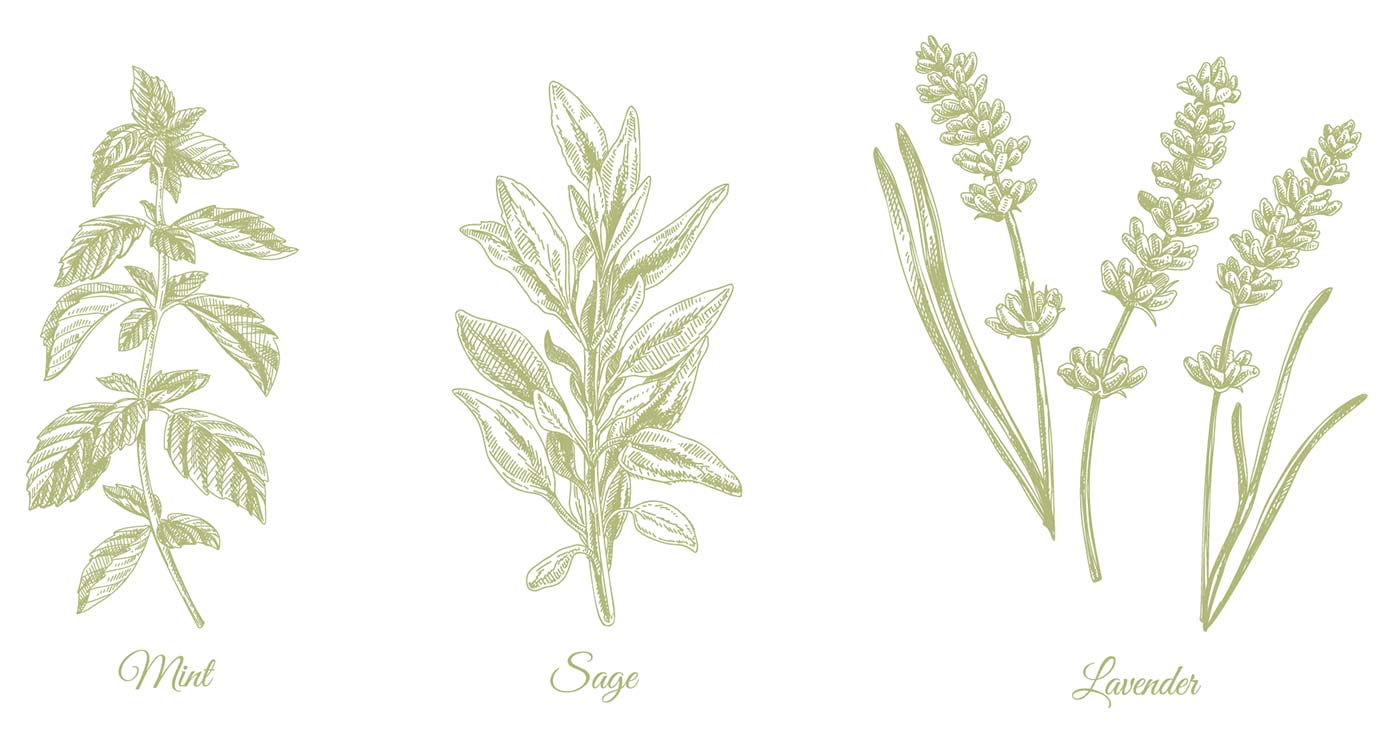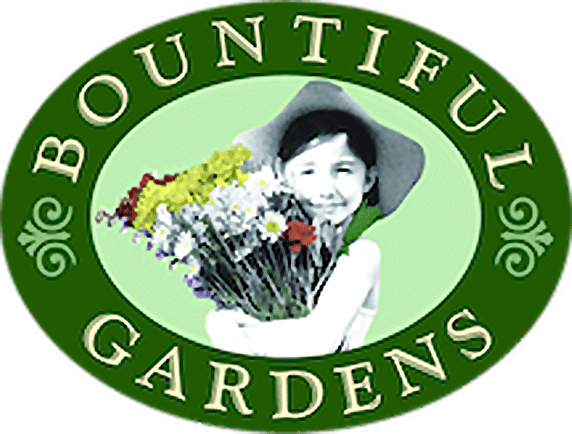Growing Herbs for Tea: Sunshine in a Cup
A warm cup of herbal tea during the cold winter months can feel like a cup of sunshine, especially if you grew the delicious herbs yourself. Many common herbal teas are made from the flowers, leaves, seeds, and stems of plants that can easily be grown at home, bringing beauty to your yard as well as bright flavors to your cup. These include tulsi (holy basil), mints, lemon balm (melissa), sage, chamomile, lavender, and rose.
Nature nurtures your mind, body, and soul and drinking a warm cup of homegrown tea for nutrients, health benefits, comfort, and flavor brings you the benefits of summer sunshine all year long. So, while enjoying your tea inside this winter, you can start the process and planning of growing herbs in a sunny spot at home.
You’ll first need to consider what location works best for you:
—Indoors:
- in pots on a sunny windowsill
—Outdoors:
- in pots on a sunny patio, deck, front stoop, or balcony
- in the earth, in a vegetable garden, flower bed, or walkway border
- in the earth, in a separate herb garden area
As you observe where the sunniest spots are for planting in the coming seasons, you can also start to think about the other benefits of growing herbs in your yard. Not only will they add beauty to your landscape and your patio, they will provide shelter and food for beneficial insects. The butterflies, moths, native bees, and ladybugs will feed on the flowers of lavender, mint, and basil, while mosquitos will be deterred. Organic pest control with herbs and other flowering plants is one way to reduce or eliminate the use of toxic pesticides and insecticides on grass lawns. Roundup (glyphosate), the most common weed killer on the market today, also kills insects, birds, and sometimes humans. See sidebar for more information on reducing toxic lawn chemicals while increasing pollinator habitat.
What else can you do this winter after planning for spring and drinking tea? You can start planting tulsi, mint, chamomile, sage, and lemon balm indoors from seed in February. Lavender and rose plants are best sourced from a reputable garden center that sells herbs and flowers in small pots that you can transplant outside in May.
Most herbs require little maintenance during the summer growing season; they just need trimming of the leaves and flowers to encourage more growth. The leaves and flowers can be preserved by drying or freezing, for future cups of tea to enjoy.
Teas made from these herbs are naturally caffeine-free and have many health benefits. Here are some tips for starting and growing; your landscape or nursery center will also be happy to advise:
TULSI (holy basil) is an annual plant that self-seeds, meaning new plants sprout in the spring from seeds that fell to the ground during the previous year. Plant seeds in trays or pots indoors in February. Place the tray or small pot on an electric heat mat to heat the soil to 70 degrees, required for seed germination. Once the seeds sprout and grow into small seedlings, transplant outside in a sunny spot at the end of May. As the flowers start to appear on the plant, pinch some of them off and harvest some of the leaves for drying. The plant will grow taller and wider if you continue to pinch off some of the top growth flowers. This tea is known to relieve stress and anxiety and can help reduce blood pressure and blood sugar levels (stimulating the secretion of insulin) as well as boost the immune system.
MINTS (peppermint and spearmint) are perennial plants that can be planted in the ground or in a pot. Every winter, the mint plants die back to their roots, lie dormant, and then regrow vigorously in the spring. The best way to start mint in your yard is from cuttings from a friend’s or neighbor’s plant or by buying seedlings from a local garden center. Plant in a sunny spot or partial shade, preferably in a pot to prevent aggressive spreading throughout your garden. Harvest the leaves all summer and fall, cutting heavily and continuously to encourage new growth. Mint teas can relieve nausea, aid digestion, and sweeten the breath. They can also relieve tension headaches and clear sinuses.
LEMON BALM (melissa) is a perennial plant, also part of the mint family, Lamiaceae. The plant dies back in the fall, the roots remain dormant in the winter and the plant grows back in the spring. For the first year, sow seeds directly in the ground in early spring (April). The plants thrive in full sun or partial shade and grow aggressively. Prune back the small shoots that come up to keep it from taking over other plants. Melissa tea is known to relieve stress and anxiety and promotes better sleep. It also eases indigestion and headaches, especially migraines.
SAGE is a shrubby perennial plant that grows quickly, but not as aggressively as mint. It is an intensely aromatic culinary herb as well as a delicious herb for tea. Plant seeds in trays or pots indoors in February. Transplant outside in a sunny spot at the end of May. Harvest the sage leaves as long as the plants are actively growing and before flowers appear. The leaves dry and freeze well for tea that promotes digestion, reduces stress, and relieves sore throats.
CHAMOMILE (German species, not Roman) is an annual plant grown for its flowers. You will need to sow the seeds directly in the ground every year in early spring. Sunlight is required for germination, so spread the seeds on top of the soil and keep them moist, not soggy. Once the plant begins to bloom, cut the flowers and dry them. The more you cut, the more the plant continues to flower. Chamomile can tolerate partial shade as well as full sun. The tea made from the dried flowers has a fruity aroma and is known to calm nerves, promote relaxation, alleviate insomnia and anxiety, and aid in digestion. A gargle with this tea can also soothe a sore throat.
LAVENDER (genus Lavendula) is a perennial plant known for its fragrance and beautiful purple flowers. The English lavender varieties that grow well in New Jersey and are cold-tolerant include ‘Phenomenal®’ Lavender, Lavandula Angustifolia (tall) and Munstead (short). Lavender needs full sun and well-drained, dry, sandy, gritty soil, to grow best. Add gravel for better drainage if necessary. Don’t amend the soil with too much organic matter before planting, because a low to moderately fertile soil is preferred. To start from a cutting, choose a non-flowering shoot over the summer to start a new plant in soil. Starting from seed is possible but takes longer to germinate and flower. For the beginner, buying lavender plants in a pot from a reputable garden center and transplanting into your yard is the easiest way to start. Prune back the plants every year after flowering to half their size to stimulate new growth the following year. Lavender tea relieves stress and anxiety and promotes better sleep. It also supports the digestive system and balances the immune system.
ROSE bushes are best planted in November through March from bare-root plants. You can also take a cutting from your friend’s or neighbor’s plant and put it in soil or choose a non-flowering shoot over the summer to start a new plant in soil. No matter how you plant, always ensure the rose bushes are free of pesticides. Rose tea can be prepared by steeping fresh or dried rose bush petals or flower buds in hot water. It’s rich in vitamin C, polyphenols, such as gallic acid, anthocyanins, kaempferol, and quercetin. These antioxidants help neutralize free radicals and contribute to good health. Rose tea also helps reduce anxiety and improve digestion.

Harvest and Preserve:
After harvesting the herb stems with leaves or flowers, tie them in small bunches and hang upside down from a rack or ceiling beam in a well-ventilated area, to dry them. Once they’re dry, store them in closed glass jars or metal tins in a cool, dark cupboard. The herb leaves can also be spread on cloth or paper in a dark, dry place for drying or placed in plastic bags right into the freezer.
By adding 1 cup of boiled water to 1 teaspoon of dried herbs or 1 cup of water to 1 tablespoon of fresh herbs, you can make a delicious cup of tea, filled with delicate flavors and delightful aromas. These tea combinations are also delicious: chamomile and lavender, rose and lavender, sage and lavender, sage and rose, mint and lemon balm.
Since humans discovered fire and began to use it domestically, plants have been gathered and hot water added, to make delicious teas. Bring this history into your home by bringing the plants into your yard, creating comfort and pleasure, beauty and abundance, and wonderful flavors in your next warm cup of tea.





